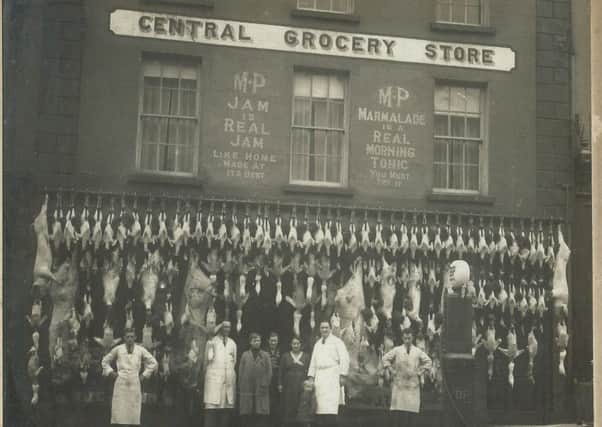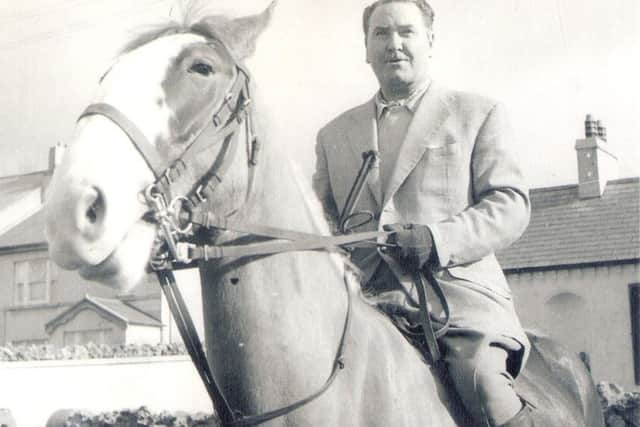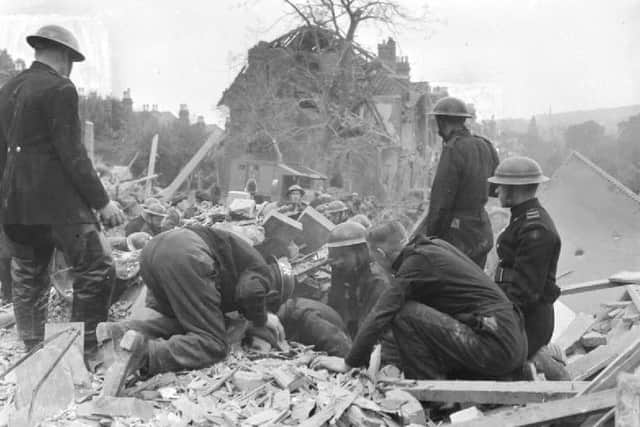Songs of yore with major and many events from history make Christmas very merry


The old photograph of Irvine’s butcher shop and grocery store in Enniskillen is from Christmases past, a shop-front festooned with a festive curtain of turkeys, ham and beef.
It’s from an era long-gone, like many of the stories shared here this year.
Advertisement
Hide AdAdvertisement
Hide AdThe evocative ensemble of shop workers and seasonal staples comes from a local history book mentioned in October. Entitled Enniskillen in the Rare Ould Times it’s the fourth and biggest in a series of books recording local peoples’ reminiscences.


Compiled by Dr Mary Gordon and many dozens of contributors collectively called ‘The Millennium Babes’ it includes 1,200 old photos, bursting with nostalgia.
Another book provided Roamer’s page with memorable pictures in May and again in October.
Until music-academic and biographer Nuala McAllister Hart penned Josef Locke, The People’s Tenor no one had seen the family-album photo of Northern Ireland’s legendary tenor on one of his beloved horses.
Advertisement
Hide AdAdvertisement
Hide AdNuala’s was a year of hectic book tours and exhibitions, highlighting the centenary of Locke’s birth in Londonderry in 1917.


She shared some of the great singer’s secrets on Roamer’s page.
“He kept a pet mynah bird when he lived in Blackpool,” Nuala revealed, “and it could curse like a trooper. Joe was often to be found out looking for the bird when it escaped.”
He always ended his packed performances with the stirring anthem ‘Blaze Away’, perhaps prophetically, because Nuala’s biography of the singing star, soldier, father, policeman, farmer, family man and accomplished horseman has so far blazed a trail to the prestigious McCrea Literary Award for 2016-2017.
Advertisement
Hide AdAdvertisement
Hide Ad“They say we are aged and grey, Maggie, as spray by the white breakers flung,” was one of Locke’s most popular songs. “But to me you’re as fair as you were, Maggie, when you and I were young.”


There’s hardly an album of Irish songs that doesn’t include When You and I Were Young, Maggie.
It’s as Irish as Guinness, shamrocks or leprechauns…except it isn’t!
Back in July Roamer’s page revealed that the plaintive song – also performed by Irish world-superstars like Foster and Allen, John McCormack and James Galway – has no connections whatsoever with the Emerald Isle!
Advertisement
Hide AdAdvertisement
Hide AdGeorge Washington Johnson, a 24-year-old schoolteacher in Mount Hope Ontario, wrote the words for his student and wife-to-be Margaret (Maggie) Clark.


They often passed the lyrical creek, old rusty mill and green grove when they walked hand in hand.
They were married in 1864 but George and Maggie never became “aged and grey” together, as the song recounts.
A gravestone in a Mount Hope cemetery sombrely confirms that Maggie died in 1865, just seven months after their wedding.
Advertisement
Hide AdAdvertisement
Hide AdWhen George wrote the words it must have been heartbreakingly apparent that Maggie would never live to be “as fair as you were” for she was suffering from tuberculosis, a virtual death sentence in those days.
James Austin Butterfield, a musician and songwriter in Indiana, put the words to music in 1866.
“Are ye right there, Michael, are ye right,” sang 89-year-old Mairead O’Dolan with great gusto in September.
Her adoring audience was a busload of railway enthusiasts who’d stopped at the former Belcoo and Blacklion station house where Mairead lives.
Advertisement
Hide AdAdvertisement
Hide AdRoamer was on the official European Heritage Weekend coach-tour of former railway stations in Fermanagh, Tyrone, Leitrim and Cavan, marking the 60th anniversary of the closure of the area’s railway lines.
“Belcoo and Blacklion station was unique,” tour-guide Alan Devers explained: “It was the only railway station that served two towns in two different countries!”
Though the European Commission might bar the Belcoo section from European Heritage after Brexit, an infinitely grimmer Europe featured on this page in August.
Hitler’s V1 rocket-powered flying bombs were known as ‘Doodlebugs’ in London where they killed 6,000 people by the end of the Second World War, with another 17,000 injured.
Advertisement
Hide AdAdvertisement
Hide AdMeanwhile marauding German U boats were cutting off Britain’s desperately-needed seaborne supplies and killing thousands of Allied sailors – between 75,000 and 85,000 died in The Battle of the Atlantic.
Ballymena-born Sir Samuel Crowe Curran, an eminent physicist and university administrator, and his Welsh scientist wife Dr Joan Elizabeth Curran (nee Strothers), worked on the development of the proximity fuse, which was largely responsible for the destruction of over 90% of Germany’s V1 rockets aimed at Southern England in 1944.
Sir Samuel’s work on magneton transmitters resulted in a device that was fitted to all Bomber Command aircraft and to Coastal Command’s radar equipment.
His invention was vital the Allied victory in the Battle of the Atlantic.
Advertisement
Hide AdAdvertisement
Hide AdWhile he was developing this, his wife Joan, in an adjoining laboratory, was methodically cutting up strips of tinfoil and improving a plan which came to be known as ‘Operation Window’ - scattering ‘metallic confetti’ or ‘chaff’ in the path of enemy aircraft, disrupting their radar.
This was famously utilised in June 1944 by the RAF to produce a phantom invasion force which thoroughly confused German defences against the Allied assault on Normandy.
Thank you to the News Letter readers and contributors who thoroughly confused Roamer’s elementary filing system during 2017 with such a variety and range of stories.
Until this page returns in the New Year – have a happy and meaningful Christmas, perhaps occasionally pondering several of George Washington Johnson’s moving lines to Maggie:
“My face is a well written page, Maggie,
But time alone was the pen.”